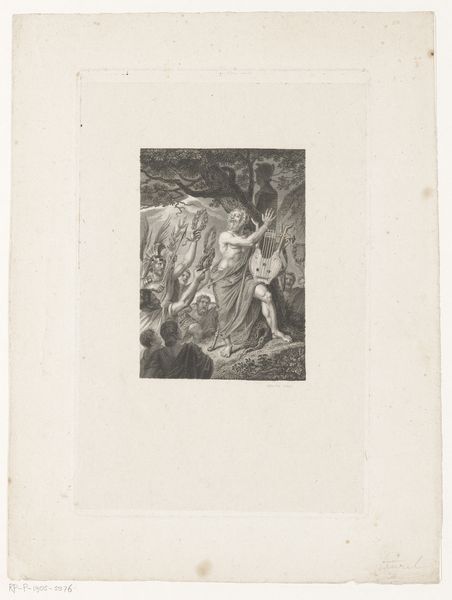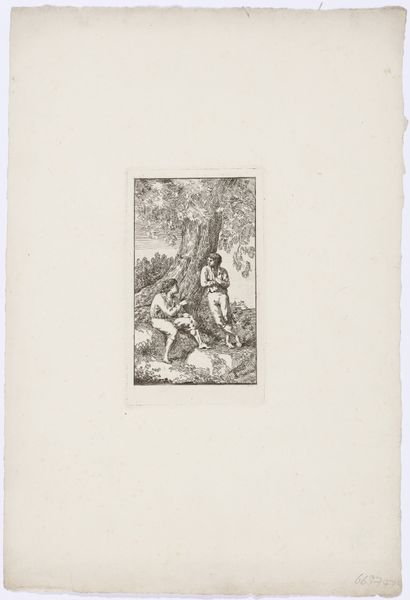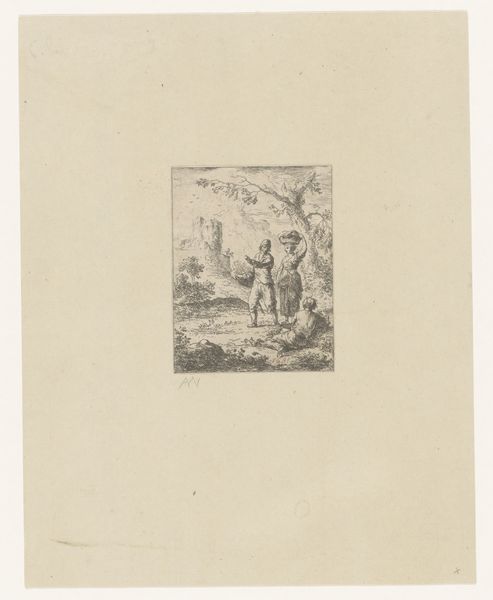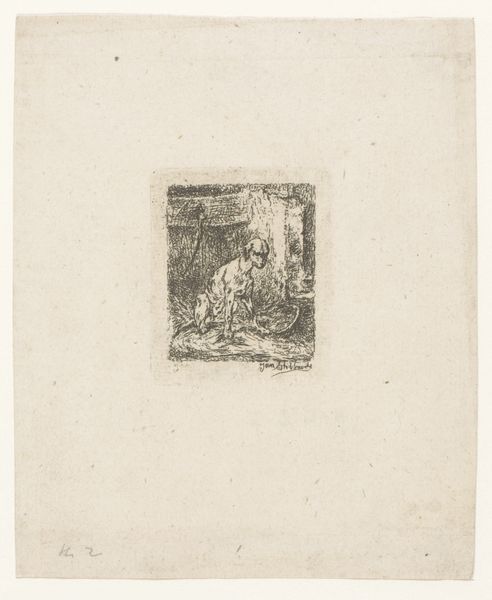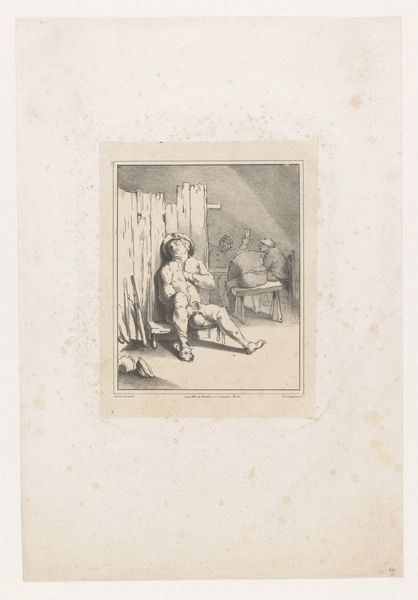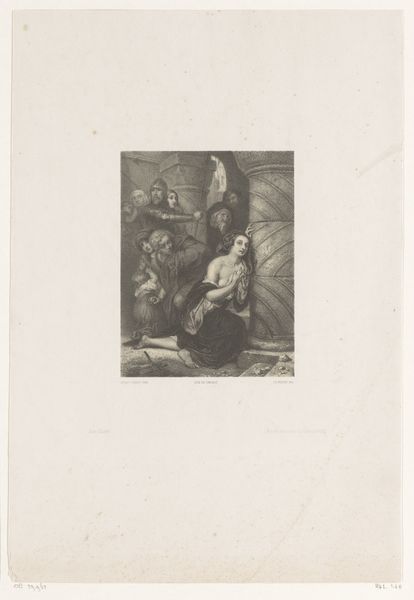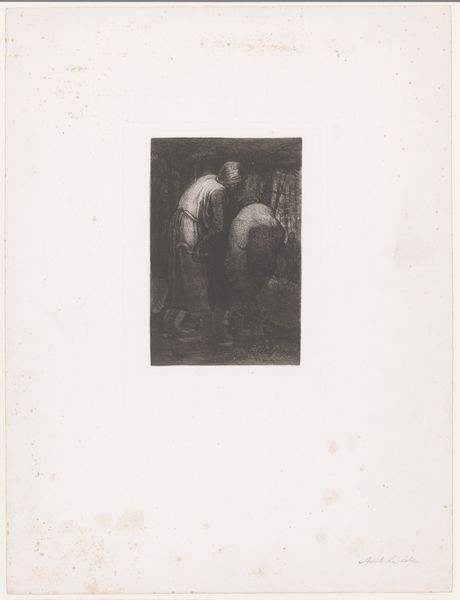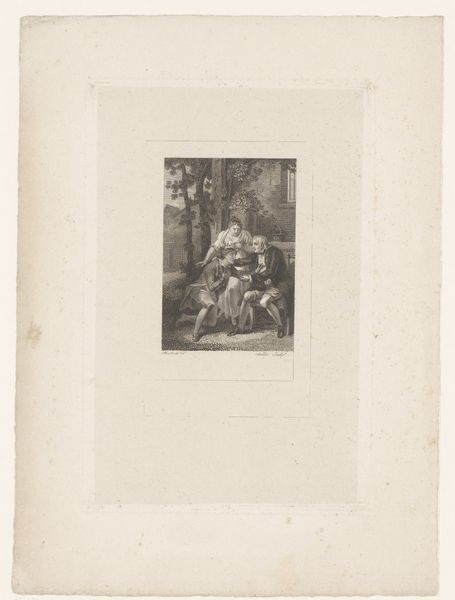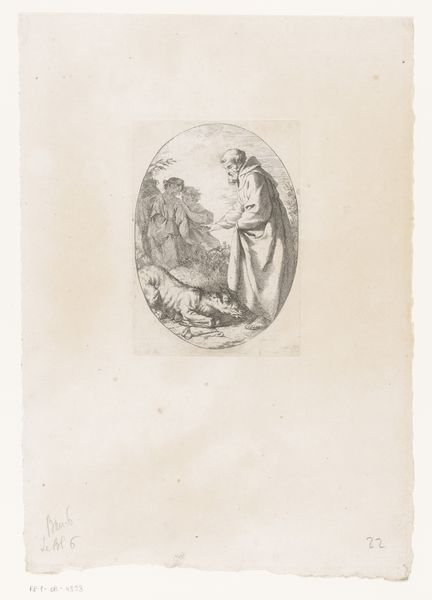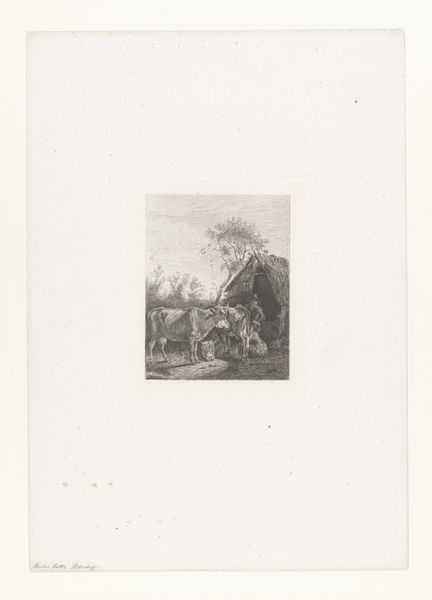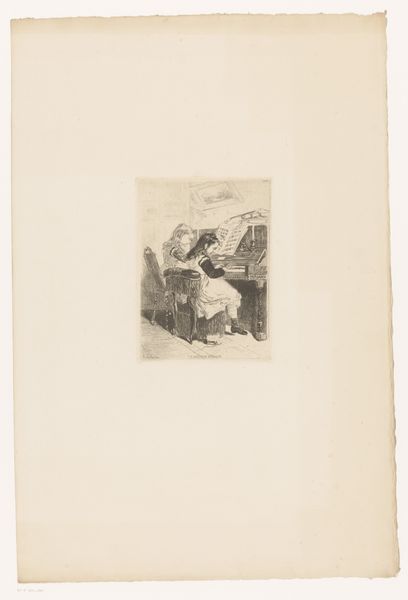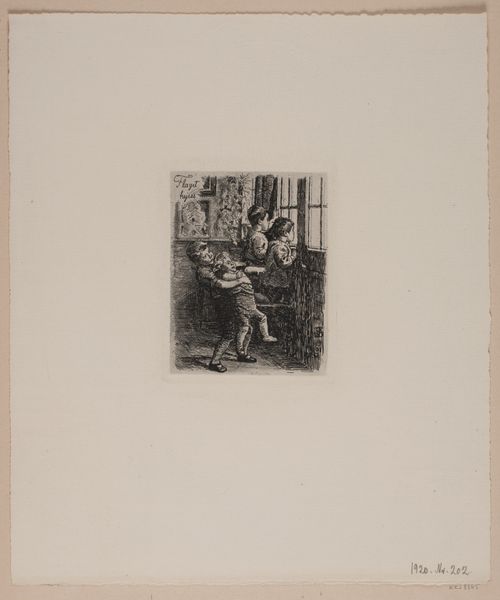
drawing, print, paper, drypoint
#
portrait
#
drawing
#
self-portrait
# print
#
paper
#
drypoint
Dimensions: height 79 mm, width 63 mm
Copyright: Rijks Museum: Open Domain
Editor: This is "Self-Portrait at the Easel" by Sixtus Thon, likely created between 1827 and 1901. It's a print, a drypoint on paper. The tight composition and monochromatic rendering give the piece an intimate, almost diaristic feel. What elements stand out to you? Curator: The use of drypoint as a medium is critical. Notice the delicate yet wiry quality of the lines; this textural effect wouldn’t be achievable through other printing methods such as engraving or etching. Consider how Thon leverages this technical process to define form, rendering his features with an exacting observational economy. The confined composition also emphasizes the picture plane. Do you perceive how Thon is using structural arrangements to express pictorial relationships, thereby flattening depth? Editor: Yes, I can see how the limited tonal range and the density of the lines flatten the figure. Is this a commentary on the limitations of self-representation, perhaps? Curator: Or perhaps a statement regarding formalist concerns. Note the angles. How does the orthogonal design from the back room add tension and structural density? This suggests a dynamic equilibrium, rather than an anecdotal portrayal. I question whether his intentions are more aesthetic, using himself as a compositional prop to create a formal investigation, as evidenced in his arrangement of planes in restricted space. Editor: That's interesting. I hadn't considered the geometric dimension of the room. I was too focused on the artist himself. Curator: Indeed, through a formalist lens, we redirect emphasis to technique, process, and material quality which, in turn, inform potential interpretive pathways. Editor: Thanks! Looking at it now, I appreciate Thon’s manipulation of the medium and his interest in shape in confined settings, as opposed to just a portrait of the artist. Curator: Precisely! Art often exists in a dialogue of aesthetics, technique, and expression.
Comments
No comments
Be the first to comment and join the conversation on the ultimate creative platform.
